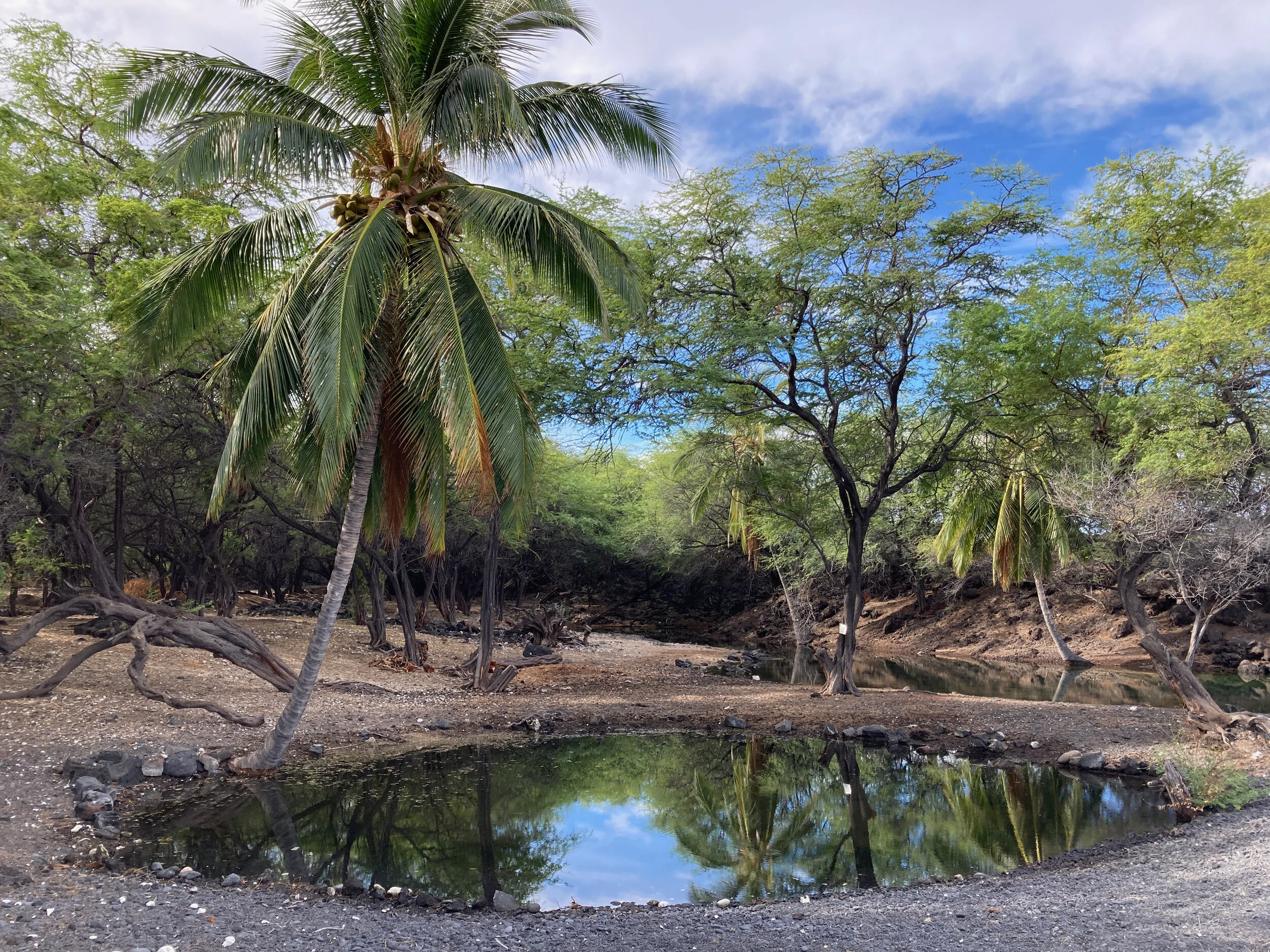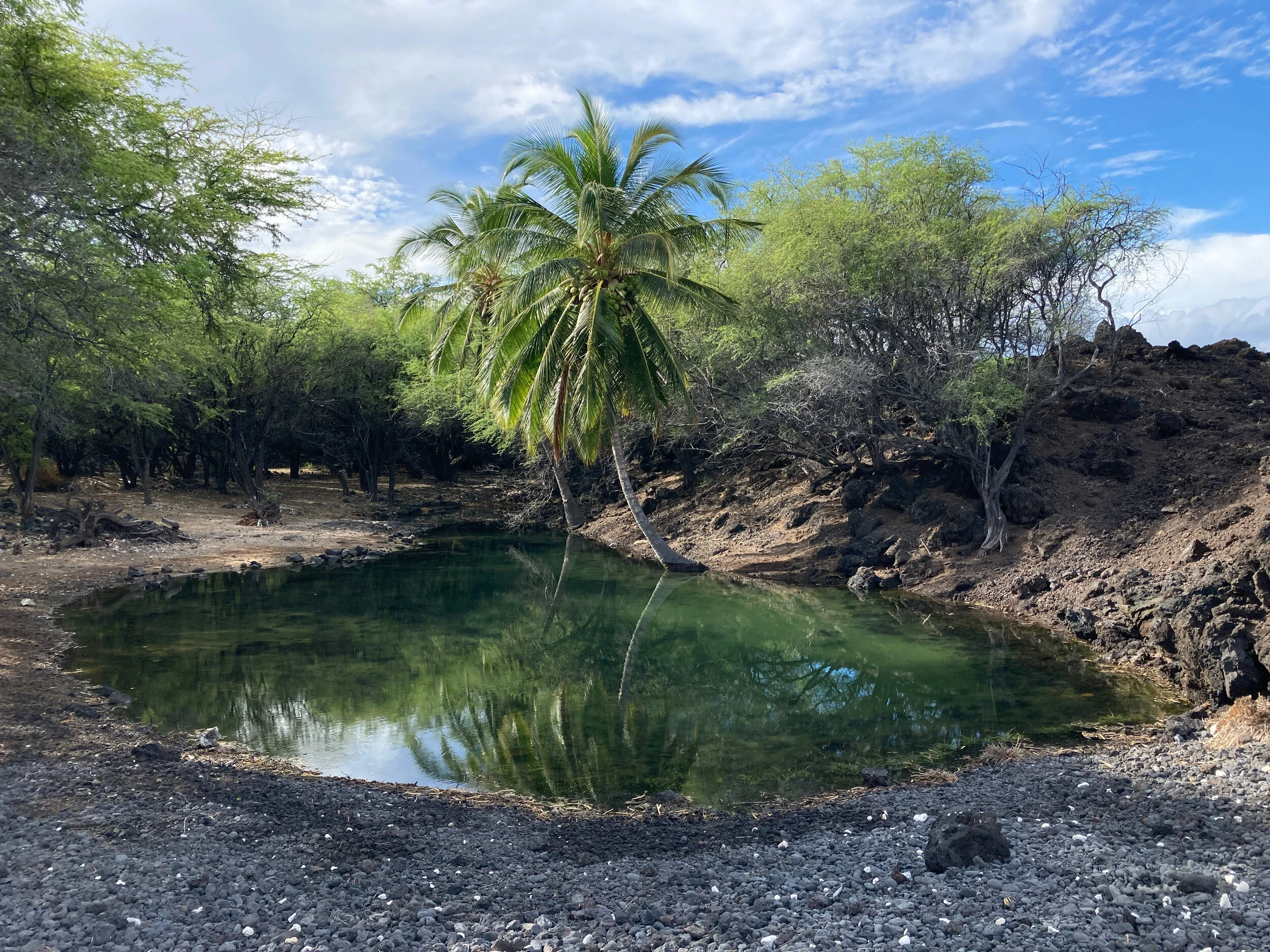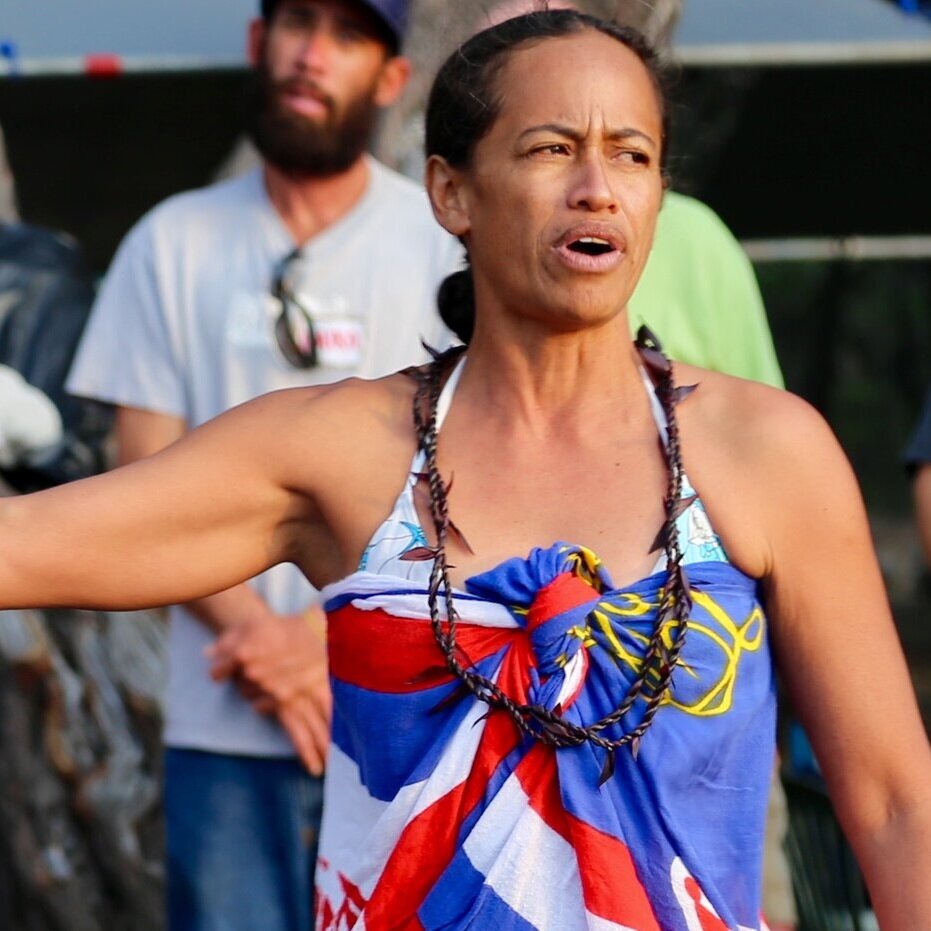On September 25, 2020, we spent time at the lua wai kai (brackish water anchialine pools) named Waiaʻelepī. Lehua Kamaka, one of our Hoa ʻĀina, has spent years engaged in the restoration of this beloved area, and introduced us to some of the current and past residents of Waiaʻelepī, starting with hints from the pond's name, Wai-A-ʻElepī, or Waters of the ʻElepī crab.
Aia i ka inoa, It’s in the name.
Place names inform us in many ways, and Waiaʻelepī is no exception. Did you know that today there are no ʻelepī crabs in Waiaʻelepī? What happened? Watch to learn of the many changes that have taken place in and around these anchialine pools, and what you can do to aid in their restoration.
Waiaʻelepī Iki
Waiaʻelepī Nui
ʻŌpae ʻula
ʻŌpae ʻula are endemic anchialine pool shrimp that grow to about 1.5 centimeters in length, and can live to be over 20 years old. These shrimp are important to the ecosystem as they graze on the algae and bacteria that grow on the rocks and in the water within the pool. The introduction of invasive fish, such as tilapia and mollies, into anchialine pools causes a decrease in ʻōpae ʻula population as a result of predation and reduced habitat.
‘Ōpae ʻula, an important endemic anchialine pool species.
Invasive fish removal
Maintenance and care of these anchialine pools includes the removal of invasive species. One of our youngest Hoa ʻĀina, Hāweo, is an expert in invasive fish removal! This large tilapia was removed using a fishing pole and line. Food coloring is used to determine the gender of the fish that are removed. Male tilapia have one opening above a "V" shape, while females have two openings above a "U" shape. Each female tilapia can produce hundreds of offspring per year, so it is important to identify and remove this invasive species before they become established.
Hāweo holds a large tilapia that she has removed from Waiaʻelepī.
Male (left) and female (right) tilapia.
Pehea e kĀkoʻo ai? What can you do?
To preserve Waiaʻelepī here are some tips from our Hui Aloha Kīholo Hoa ‘Āina staff:
Do not bring things that don’t belong here.
Example: Bullfrogs, snapping turtles, tilapia
Get involved with Hui Aloha Kīholo’s efforts: Mālama ʻĀina Days
Self-accountability
Be conscious of place. Your actions have effects.
MAHALO NUI
Mahalo to everyone who came along to Kīholo with us. In this time of social distancing it is an honor to still come together and share the vibrancy of Kīholo with you in safe and responsible ways. Kīholo smiles.
LEHUA SANDY KAMAKA
Hui Aloha Kīholo operates with a small but dedicated staff and now has a physical presence on the ground, seven days a week, through our Hoa ʻĀina team. Lehua is one of our Hoa ʻĀina. In collaboration with our partners, Hoa ʻĀina, or “friends of the land,” monitor and protect natural and cultural resources, engage with and educate visitors, and manage camping. By creating a community of stewards, with visitors, kamaʻāina (locals), partners, and advocates, Kīholo can continue to thrive culturally and environmentally.
KUʻULEI KEAKEALANI
Educator, cultural practitioner, poet, storyteller, activist, and our Cultural Director at Hui Aloha Kīholo, Kuʻulei wears many hats but wears them all with a strong sense of the history of her ancestors and the responsibility we have to perpetuate Hawaiian culture for future generations.









